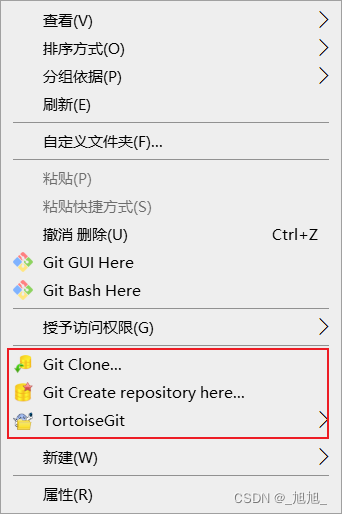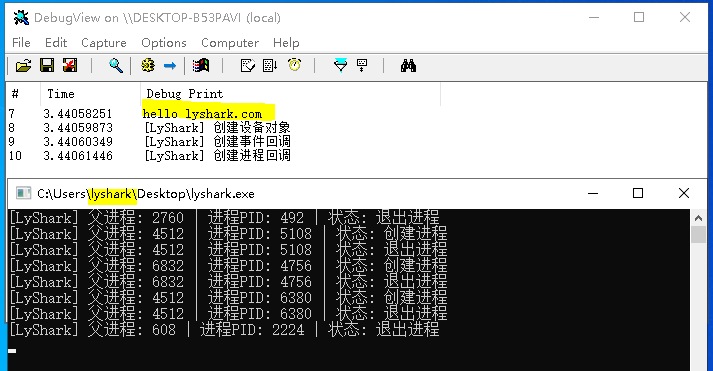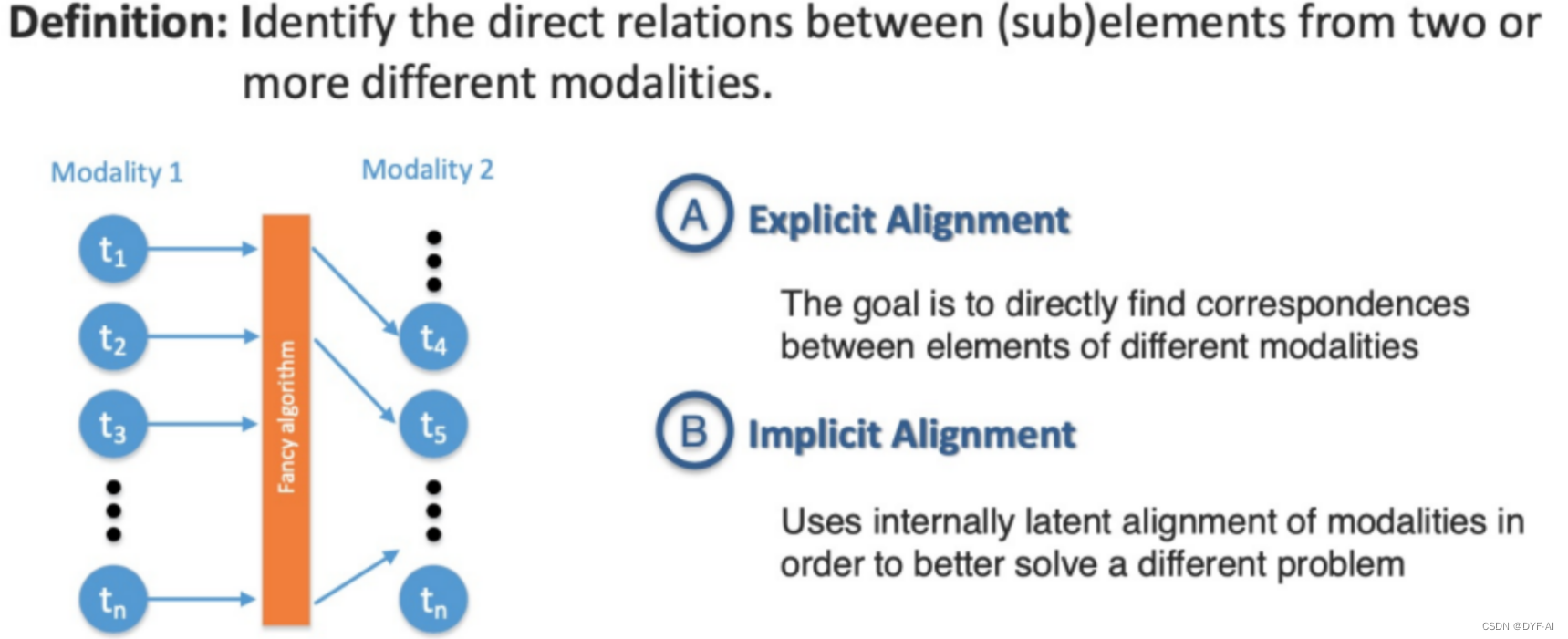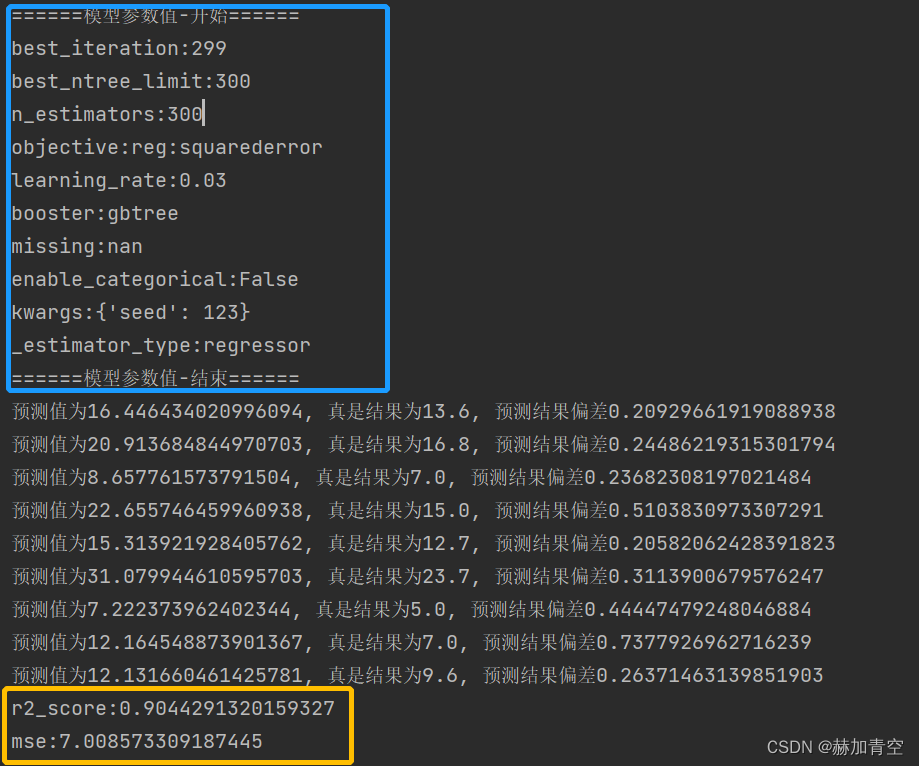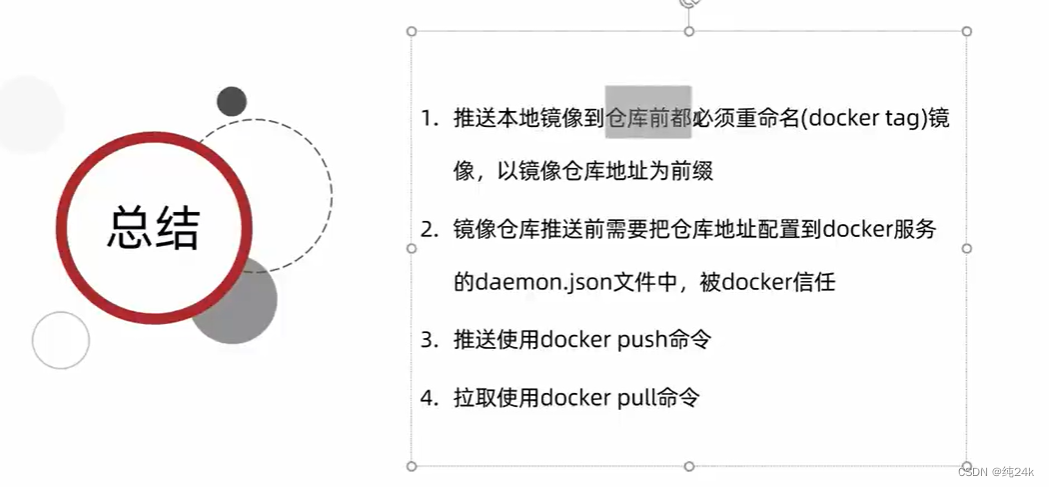目录
1.连接查询
1.1inner(内连接)
1.2left join(左连接)
1.3right join(右连接)
1.4直接查询两个表相同的字段值的数据
2. VIEW(视图)
2.1create view(创建视图)
2.2修改源表数据,视图数据也随之改变
2.3视图数据是否能修改
3. UNION(联集)
4.交集值
5.无交集值
6.CASE
7.空值(NULL) 和 无值( ' ' )
8.正则表达式
准备两张表
1.连接查询
- inner join(内连接):只返回两个表中联结字段相等的行
- left join(左连接):返回包括左表中的所有记录和右表中联结字段相等的记录
- right join(右连接):返回包括右表中的所有记录和左表中联结字段相等的记录
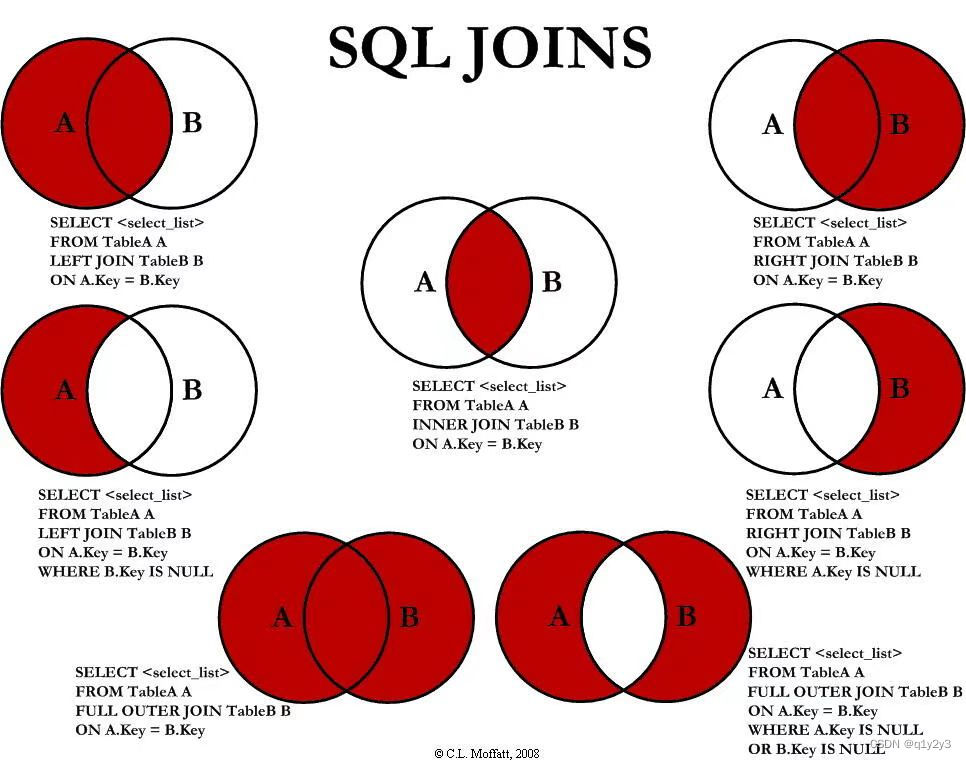
1.1inner(内连接)
内连接:将两个表中字段相同的数据列出来
select * from info A inner join location B on A.name=B.name;
#使用 using 时,两个表中字段必须相同
select * from info A inner join location B using(name);
1.2left join(左连接)
左连接:将左表所有数据列出,右表name相同值的数据列出来,没有以NULL代替
select * from info A left join location B on A.name=B.name;
1.3right join(右连接)
右连接:将右表字段值列出来,左表相同的值也显示出来,没有以NULL代替
select * from info A right join location B on A.name=B.name;1.4直接查询两个表相同的字段值的数据
#一次查询两个表,效率比内连接低
select * from info A ,location B where A.name=B.name;
#对不同城市的年龄总和进行降序排序
select city,sum(A.age) from info A ,location B where A.name=B.name group by city order by sum(A.age) desc;
2. VIEW(视图)
- 视图跟表格的不同是,表格中有实际储存数据记录,而视图是建立在表格之上的一个架构,它本身并不实际储存数据记录。
- 临时表在用户退出或同数据库的连接断开后就自动消失了,而视图不会消失。
- 视图不含有数据,只存储它的定义,它的用途一般可以简化复杂的查询。比如你要对几个表进行连接查询,而且还要进行统计排序等操作,写SQL语句会很麻烦的,用视图将几个表联结起来,然后对这个视图进行查询操作,就和对一个表查询一样,很方便。
2.1create view(创建视图)
语法:CREATE VIEW "视图表名" AS "SELECT 语句";
#查询结果输出到新建的view视图中去
create view V_AB as select A.name,city,age from info A,location B where A.name=B.name;
#查看结果
select * from V_AB;
#删除view视图
drop view ‘视图表名’;
drop view V_AB;
2.2修改源表数据,视图数据也随之改变
修改view视图的数据,直接修改源表数据
update info set age=99 where name='tom';
select * from V_AB order by age desc;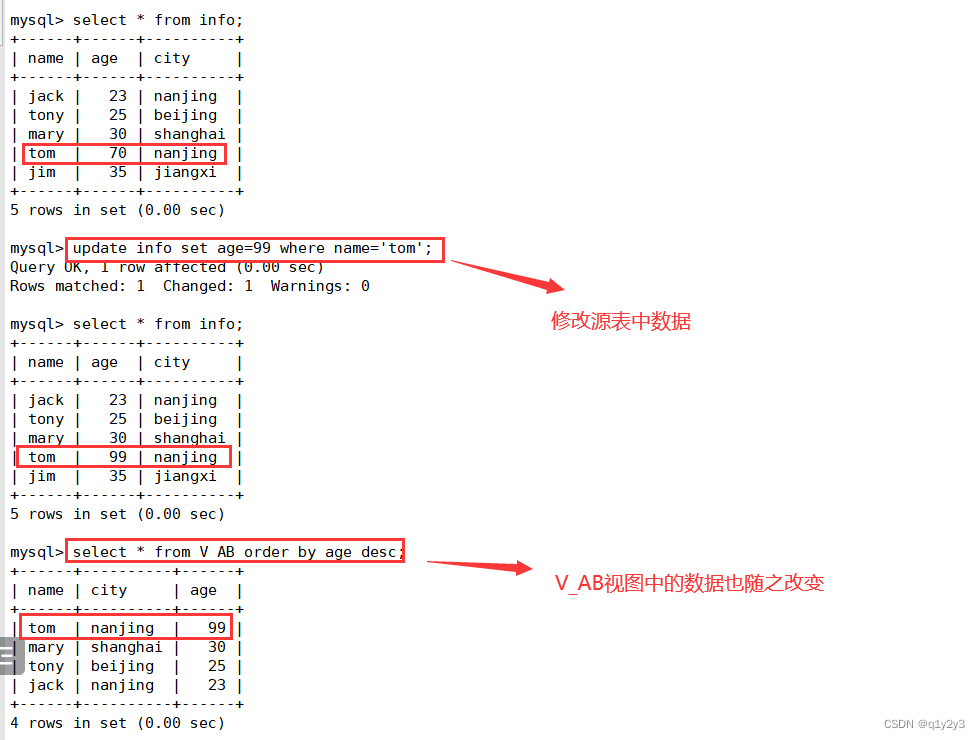
2.3视图数据是否能修改
- 当视图中字段保留源表中字段(没有经过函数处理),视图数据可以修改,源表数据也随之改变
- 当视图中字段经过处理后,视图数据无法修改(例:字段经过聚合函数修改)
当字段保留源表字段
#修改视图中数据
update V_AB set age=70 where name='tom';
当改变视图字段名称,视图包含两个表数据。
create view V_ABC as select B.name,sex,city,age number from info A,location B where A.name=B.name;
update V_ABC set number=70 where name='tom';
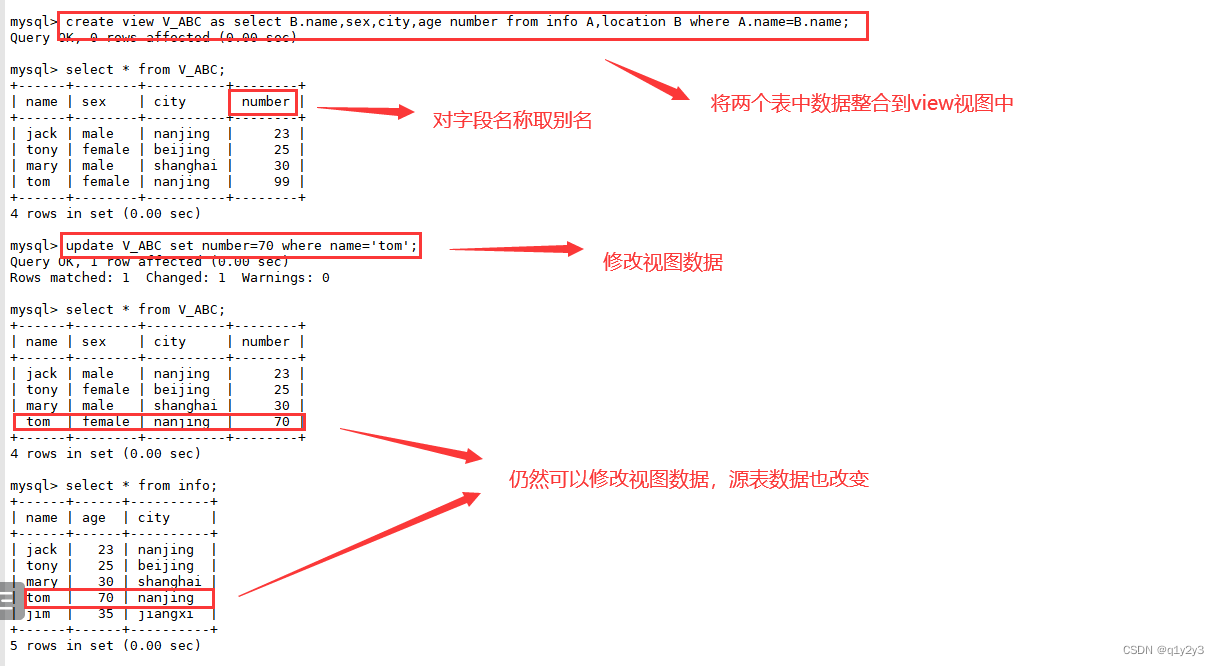
view中字段值经过函数处理
create view V_ABCD as select city,sum(A.age) from info A,location B where A.name=B.name group by city;
update V_ABCD set sum(A.age)=70 where city='nanjing';
3. UNION(联集)
联集,将两个SQL语句的结果合并起来,两个SQL语句所产生的字段需要是同样的数据记录种类
UNION :生成结果的数据记录值将没有重复,且按照字段的顺序进行排序
语法:[SELECT 语句 1] UNION [SELECT 语句 2];
UNION ALL :将生成结果的数据记录值都列出来,无论有无重复
语法:[SELECT 语句 1] UNION ALL [SELECT 语句 2];
insert into location values ('tom','male');
select * from location;
select * from info;
select name from info union select name from location;
select name from info union all select name from location;

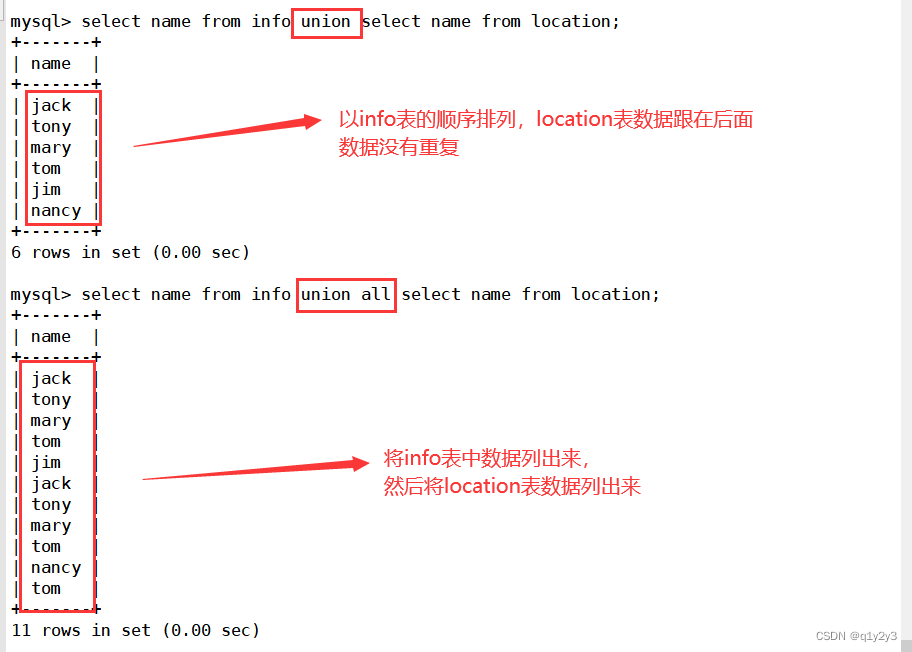
4.交集值
取两个SQL语句结果的交集
#取两个SQL语句结果的交集,有重复
select A.name from info A inner join location B on A.name=B.name;
select A.name from info A inner join location B using(name);
#取两个SQL语句结果的交集,且没有重复
select name from info where name in (select name from location);
select distinct A.name from info A inner join location B on A.name=B.name;
select A.name from info A inner join location B on A.name=B.name group by A.name;5.无交集值
显示第一个SQL语句的结果,且与第二个SQL语句没有交集的结果,且没有重复
select distinct name from info where name not in (select name from location);
select distinct A.name from info A left join location B using(name) where B.name is null;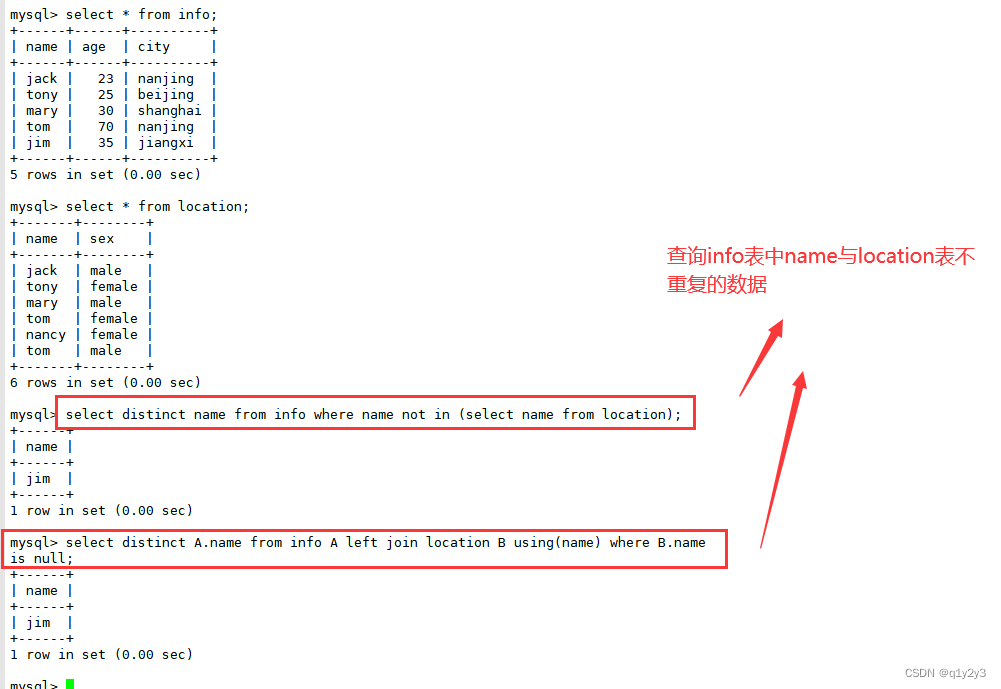
显示两个表中没有交集的值
#创建派生表,其中A表为派生表
select A.name from (select distinct name from info union all select name from location) A group by A.name having count(*)=1;
#创建视图
create view V_union as select name from info union all select name from location;
select name from V_union group by name having count(*)=1;


6.CASE
是 SQL 用来做为 IF-THEN-ELSE 之类逻辑的关键字
语法:
SELECT CASE ("字段名")
WHEN "条件1" THEN "结果1"
WHEN "条件2" THEN "结果2"
...
[ELSE "结果N"]
END
FROM "表名";
# "条件" 可以是一个数值或是公式。 ELSE 子句则并不是必须的。
select name,case name
when 'jack' then age*2
when 'mary' then age-15
else age
end 'new age' from info;
# 'new age' 是新定义的字段名 
7.空值(NULL) 和 无值( ' ' )
- 无值的长度为 0,不占用空间的;而 NULL 值的长度是 NULL,是占用空间的。
- IS NULL 或者 IS NOT NULL,是用来判断字段是不是为 NULL 或者不是 NULL,不能查出是不是无值的。
- 无值的判断使用=''或者<>''来处理。<> 代表不等于。
- 在通过 count()指定字段统计有多少行数时,如果遇到 NULL 值会自动忽略掉,遇到无值会加入到记录中进行计算。
create table t1 (name varchar(20));
#插入无值
insert into t1 values ('');
#插入空值
insert into t1 values ();
select * from t1;
#查看字符串长度
select length(null),length('zhangsan'),length('');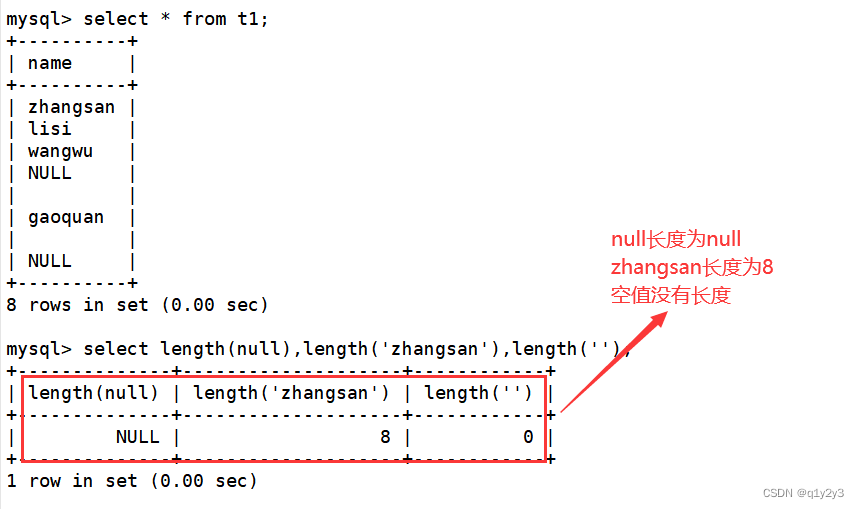
#过滤字段值为null值的数据
select * from t1 where name is null;
#过滤字段值不为null值,但不能过滤空值
select * from t1 where name is not null;
#将空值过滤
select * from t1 where name != '';
select * from t1 where name <> '';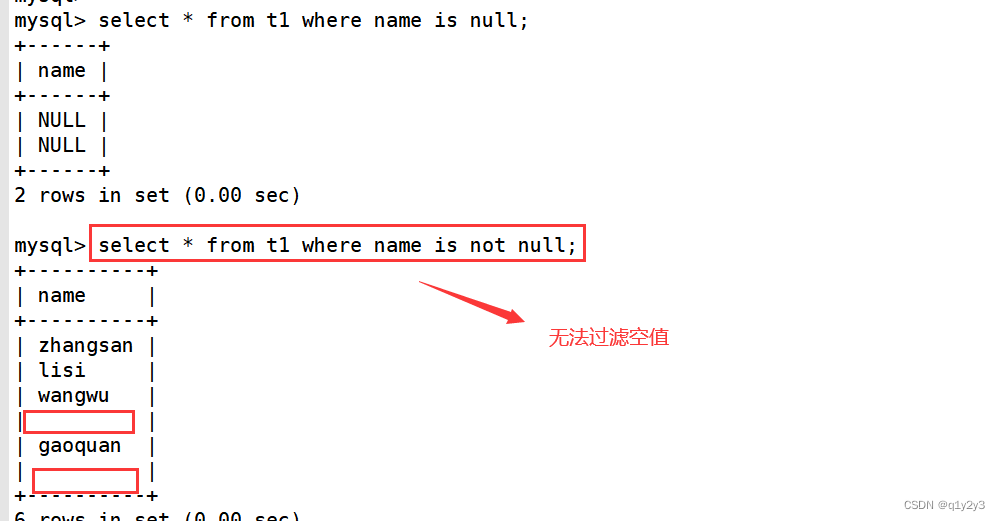
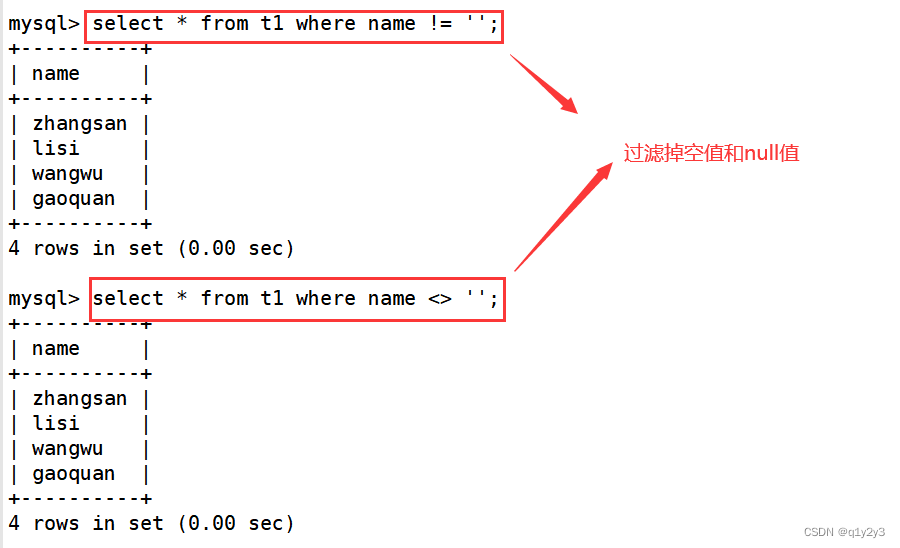
8.正则表达式
| 匹配模式 | 描述 | 实例 |
| ^ | 匹配文本的开始字符 | ‘^bd’ 匹配以 bd 开头的字符串 |
| $ | 匹配文本的结束字符 | ‘qn$’ 匹配以 qn 结尾的字符串 |
| . | 匹配任何单个字符 | s.t’ 匹配任何 s 和 t 之间有一个字符的字符串 |
| * | 匹配零个或多个在它前面的字符 | ‘fo*t’ 匹配 t 前面有任意个 o |
| + | 匹配前面的字符 1 次或多次 | ‘hom+’ 匹配以 ho 开头,后面至少一个m 的字符串 |
| 字符串 | 匹配包含指定的字符串 | ‘clo’ 匹配含有 clo 的字符串 |
| p1|p2 | 匹配 p1 或 p2 | ‘bg|fg’ 匹配 bg 或者 fg |
| [……] | 匹配字符集合中的任意一个字符 | ‘[abc]’ 匹配 a 或者 b 或者 c |
| [^……] | 匹配不在括号中的任何字符 | ‘[^ab]’ 匹配不包含 a 或者 b 的字符串 |
| {n} | 匹配前面的字符串 n 次 | ‘g{2}’ 匹配含有 2 个 g 的字符串 |
| {n,m} | 匹配前面的字符串至少 n 次,至多m 次 | ‘f{1,3}’ 匹配 f 最少 1 次,最多 3 次 |
语法:SELECT "字段" FROM "表名" WHERE "字段" REGEXP {模式};
#查找name字段中包含 'on'
select * from info where name regexp 'on';
#查找name字段中以 y 结尾的
select * from info where name regexp 'y$';
#查找name字段中以 y 结尾的或以 j 开头的
select * from info where name regexp 'y$|^j';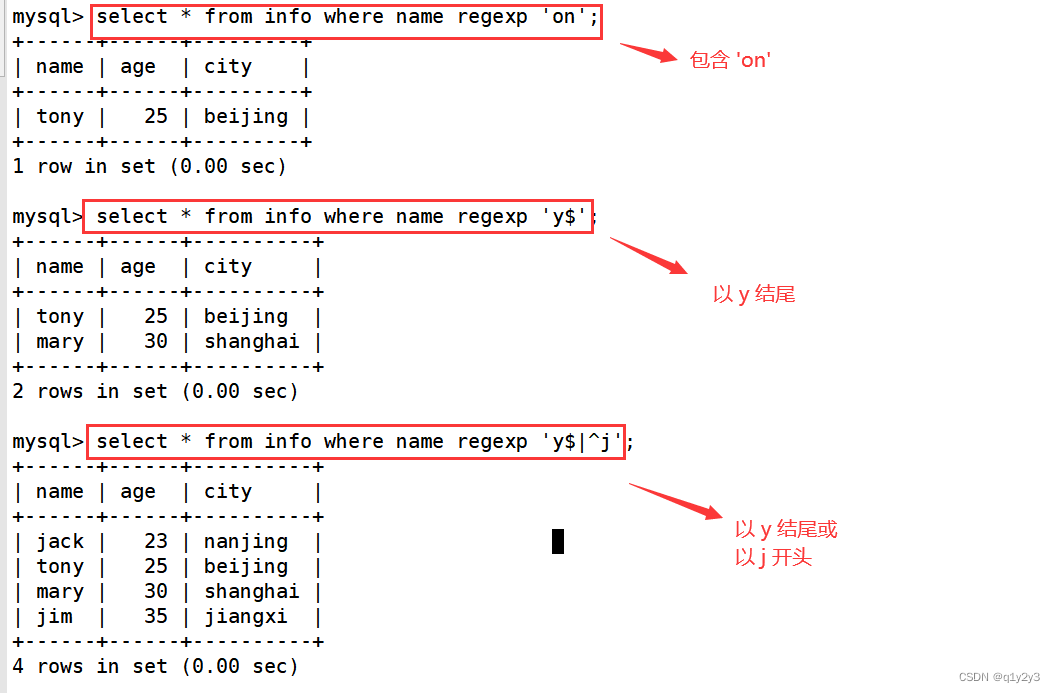
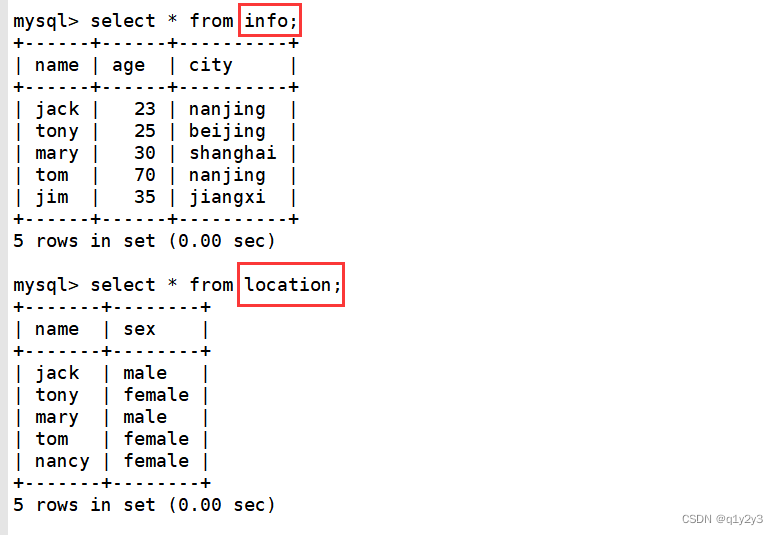
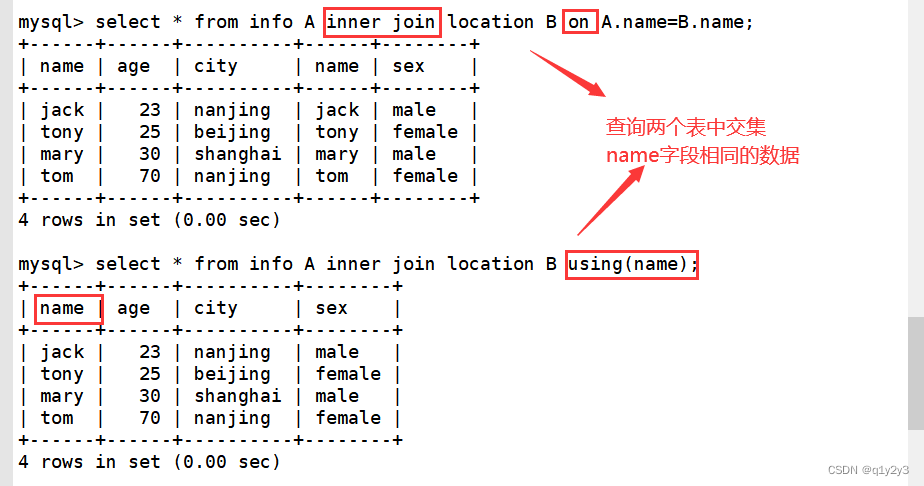


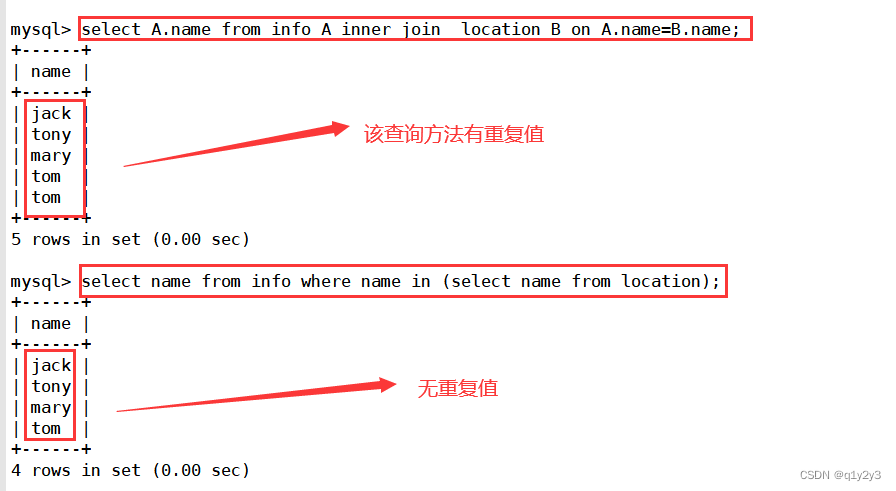

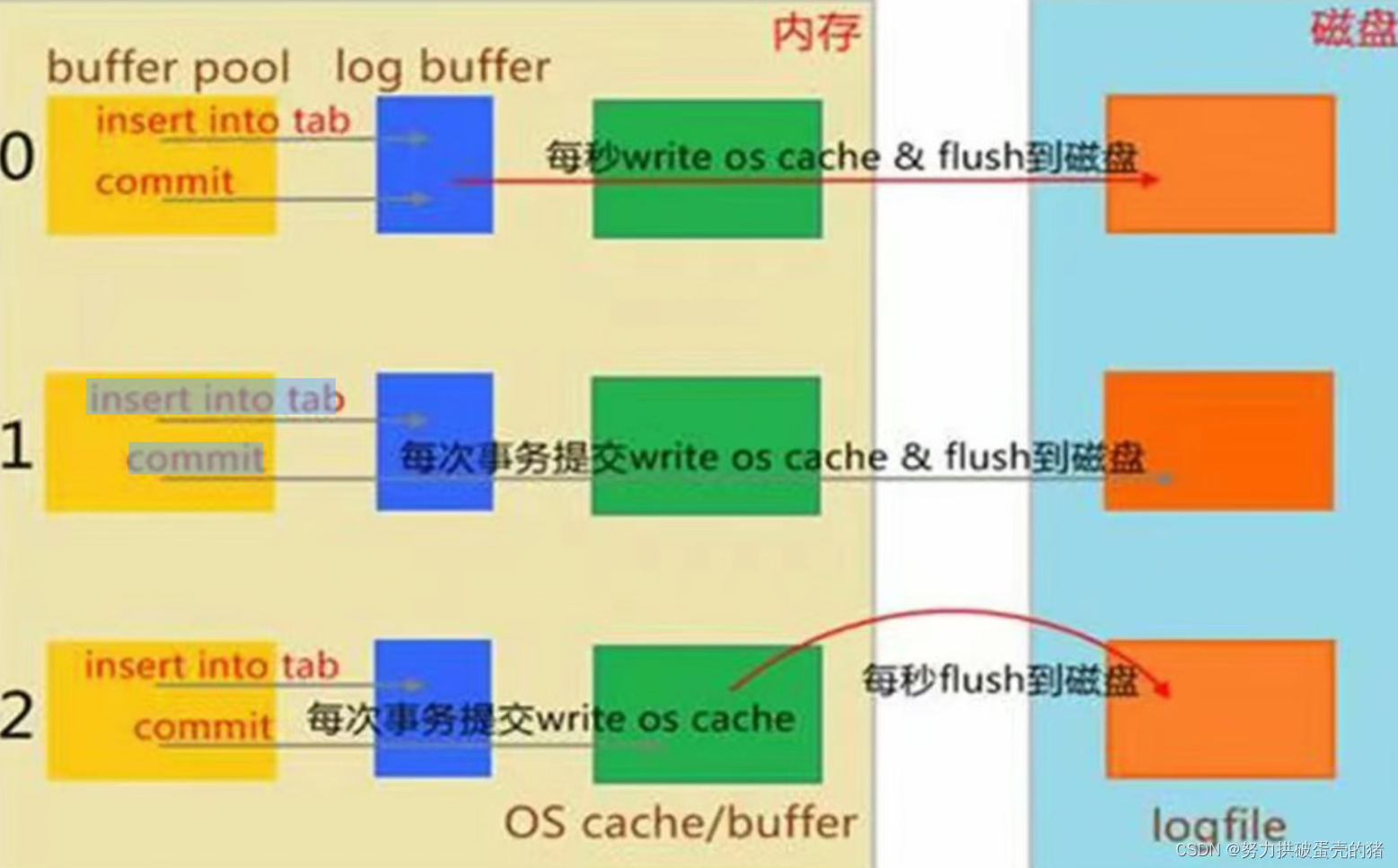
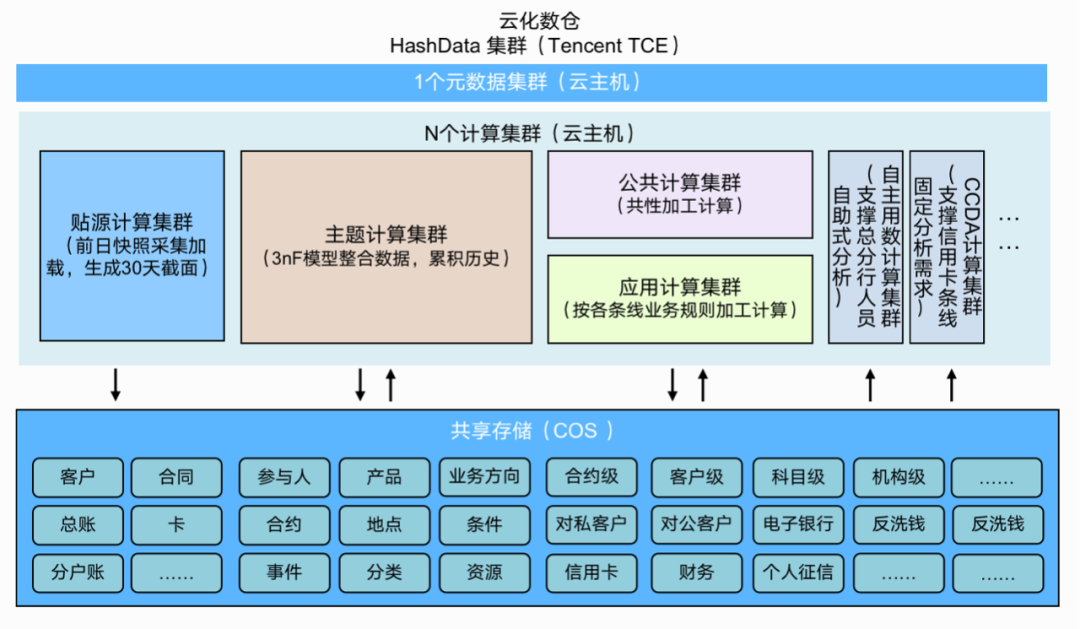

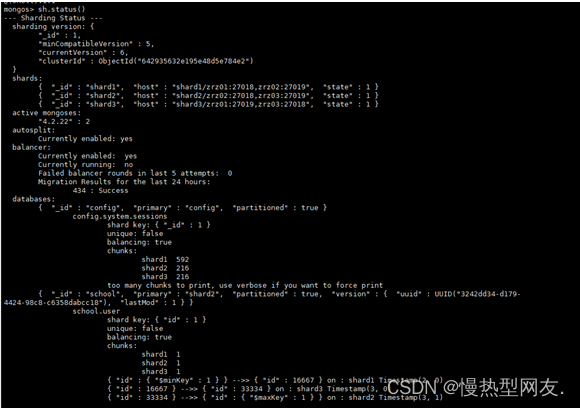
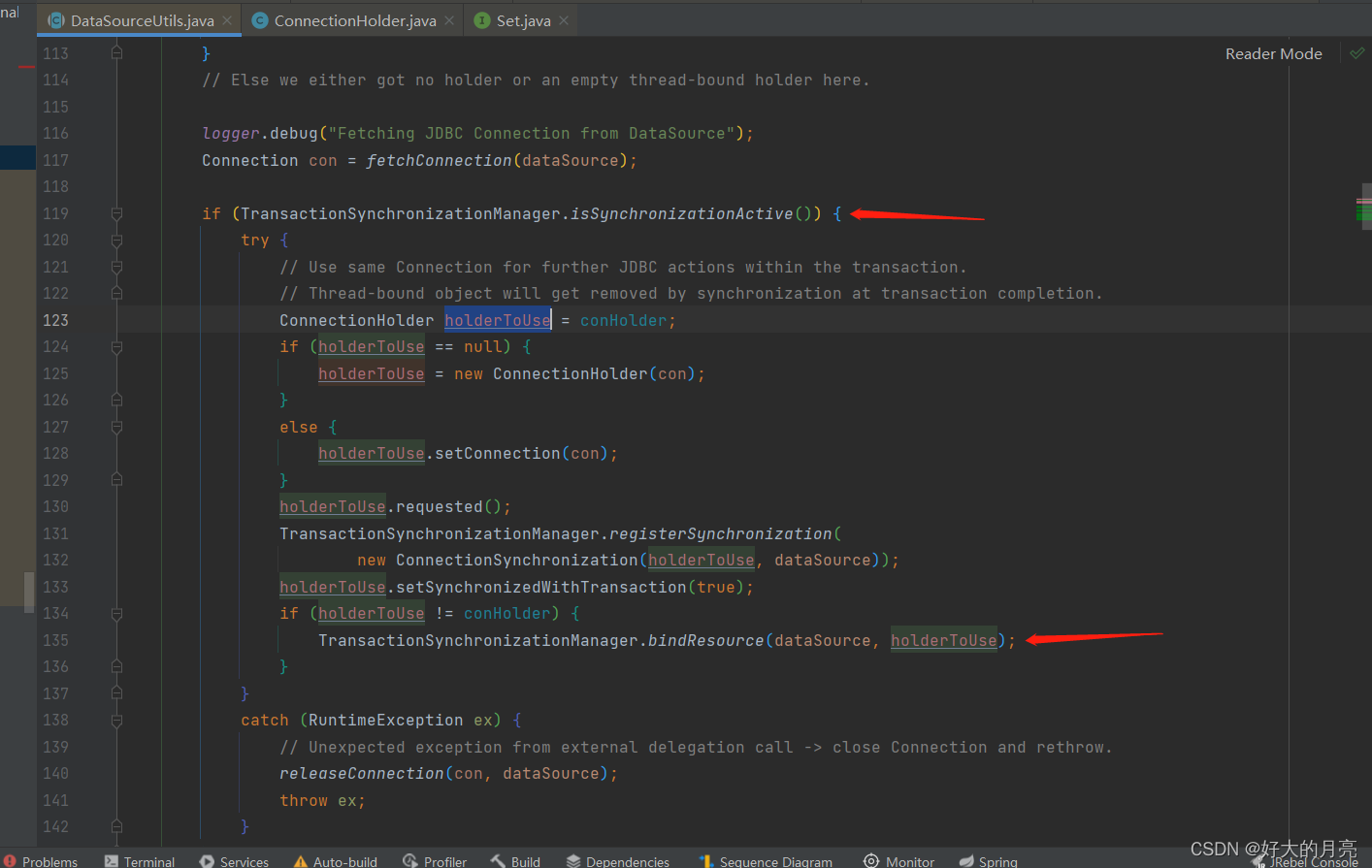
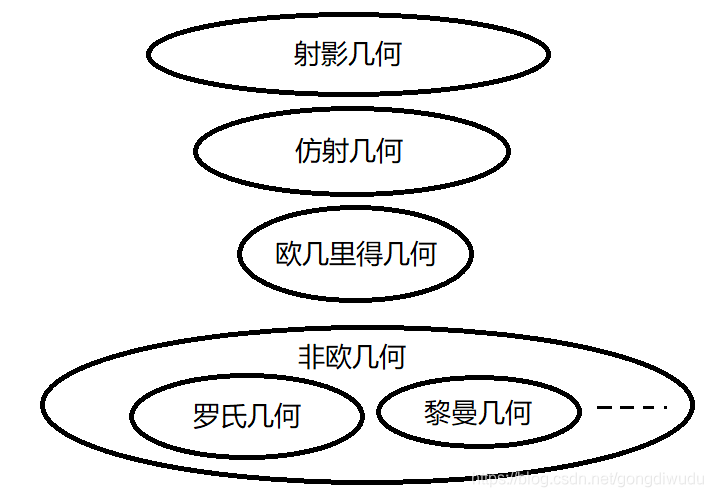
![[CKA]考试之四层负载均衡service](https://img-blog.csdnimg.cn/ed048e3f5e1d43a6810218f31f8d6b59.png)
